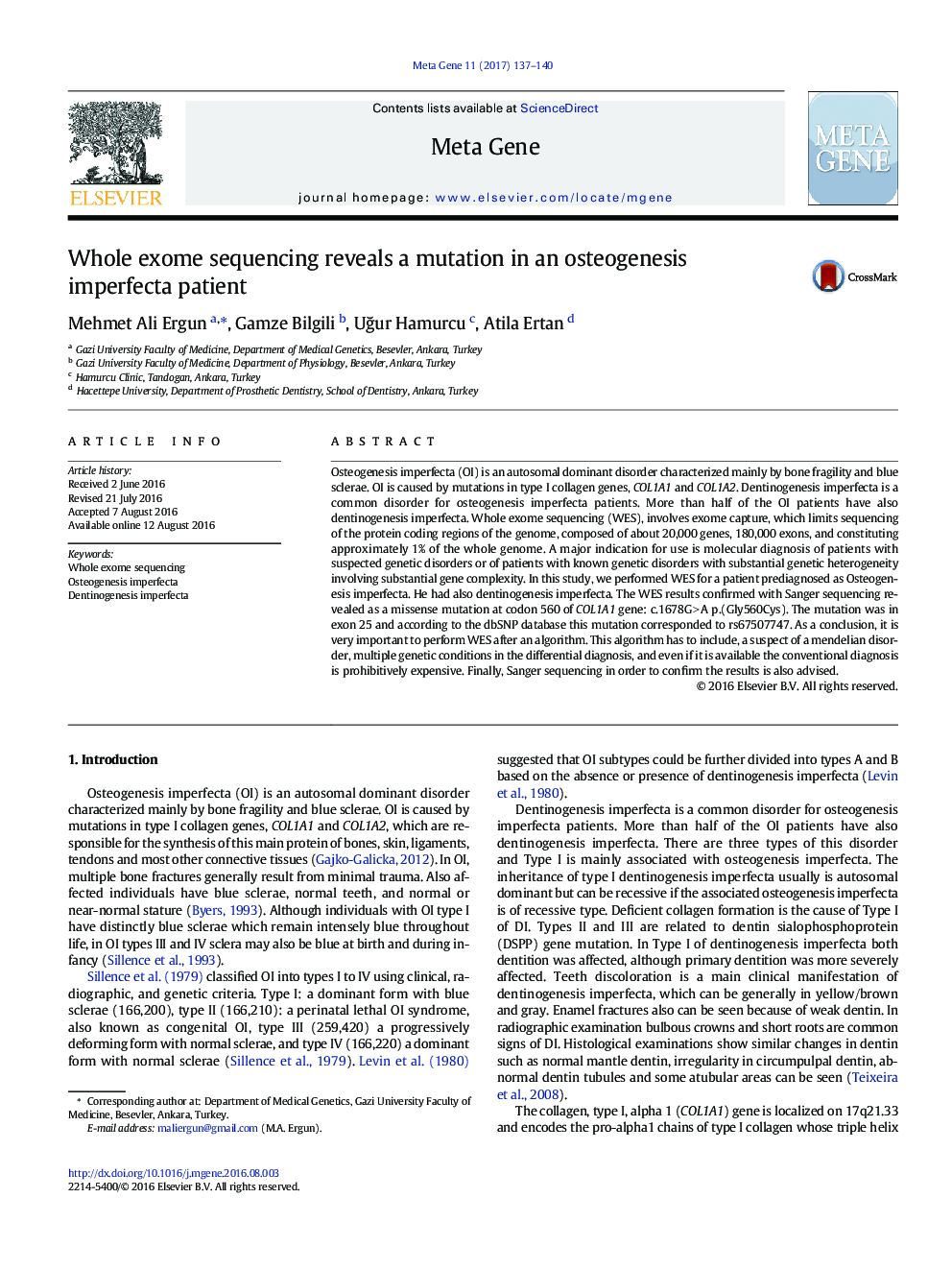| Article ID | Journal | Published Year | Pages | File Type |
|---|---|---|---|---|
| 5518380 | Meta Gene | 2017 | 4 Pages |
â¢Osteogenesis imperfecta is an autosomal dominant disorder.â¢Whole exome sequencing revealed a missense mutation in an Osteogenesis imperfecta patient.â¢Sanger sequencing has to be performed in order to confirm the WES results.
Osteogenesis imperfecta (OI) is an autosomal dominant disorder characterized mainly by bone fragility and blue sclerae. OI is caused by mutations in type I collagen genes, COL1A1 and COL1A2. Dentinogenesis imperfecta is a common disorder for osteogenesis imperfecta patients. More than half of the OI patients have also dentinogenesis imperfecta. Whole exome sequencing (WES), involves exome capture, which limits sequencing of the protein coding regions of the genome, composed of about 20,000 genes, 180,000 exons, and constituting approximately 1% of the whole genome. A major indication for use is molecular diagnosis of patients with suspected genetic disorders or of patients with known genetic disorders with substantial genetic heterogeneity involving substantial gene complexity. In this study, we performed WES for a patient prediagnosed as Osteogenesis imperfecta. He had also dentinogenesis imperfecta. The WES results confirmed with Sanger sequencing revealed as a missense mutation at codon 560 of COL1A1 gene: c.1678GÂ >Â A p.(Gly560Cys). The mutation was in exon 25 and according to the dbSNP database this mutation corresponded to rs67507747. As a conclusion, it is very important to perform WES after an algorithm. This algorithm has to include, a suspect of a mendelian disorder, multiple genetic conditions in the differential diagnosis, and even if it is available the conventional diagnosis is prohibitively expensive. Finally, Sanger sequencing in order to confirm the results is also advised.
